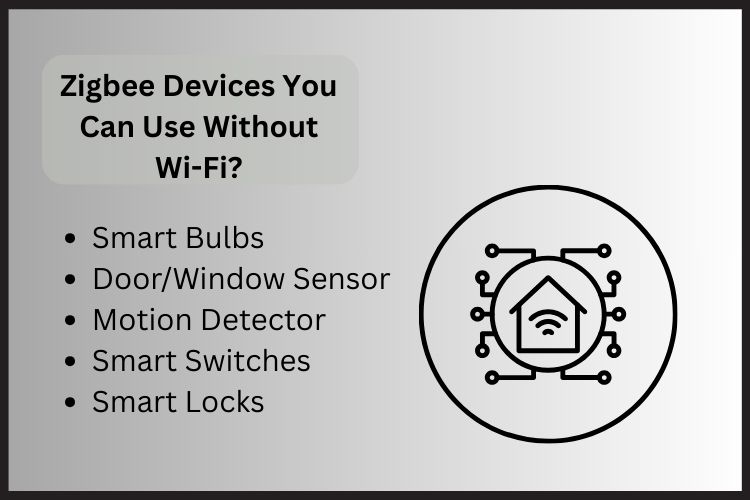Introduction
Imagine the power goes out or your Wi-Fi crashes—but your smart lights still turn on when you walk into the room, and your door sensor alerts you if there’s movement. Sounds futuristic? Not at all. Smart home automation can work even without the internet, especially when protocols like Zigbee and Z-Wave power it.
In this article, we’ll dive into how smart home automation functions offline, why it’s a game-changer, and how companies like Smartlifestack in Mumbai are helping homeowners achieve reliable, internet-free automation.
How Does Smart Home Automation Work?
Smart home automation connects devices like lights, thermostats, sensors, and switches to a central system. These devices communicate either over Wi-Fi, Zigbee, Z-Wave, or Bluetooth
While many devices use the cloud for control, local automation allows devices to talk to each other through a hub, enabling automation without relying on an internet connection.
Offline Automation: What Does That Mean?
Offline or local automation refers to smart home devices that:
- Work without an internet connection
- Use a local hub (like Zigbee or Z-Wave)
- Run automations within the home network
This means your routines—like motion-triggered lights, door alerts, or scheduled scenes—can run even when your internet is down.
Technologies That Enable Offline Smart Homes
Zigbee
Zigbee is a wireless mesh protocol designed for low-power, short-range communication. It’s perfect for offline automation because:
- It creates a self-healing mesh network
- Devices can talk to each other through a local hub
- The Internet isn’t needed for most functions
Z-Wave
Similar to Zigbee, Z-Wave also creates a mesh network and is known for its interoperability between brands.
Local Hubs
Devices like Hubitat Elevation, Home Assistant, or SmartThings (in local mode) are capable of controlling smart homes locally—no cloud necessary.
What Smart Home Features Work Without the Internet?
You’d be surprised how much you can do offline:
- Smart lighting – Motion-based lighting scenes
- Door/window sensors – Trigger alarms or lights
- Smart switches – Manual and automated control
- Climate control – Thermostats that adjust based on schedules
- Security alerts – Local sirens or triggers
All of these can operate reliably with a Zigbee setup and a local hub.
Benefits of Using Zigbee for Home Automation

1. Energy Efficiency
Zigbee devices use minimal power, making them ideal for battery-powered gadgets like sensors, remotes, and locks.
Contact us
OTP Sent On WhatsApp
2. Reliable Local Control
With a Zigbee hub (like SmartThings or Hubitat), you can run automations even if your internet goes down.
3. Secure and Stable
Zigbee networks are secure and less likely to be hacked than cloud-dependent Wi-Fi devices.
4. Scalable Smart Network
Every new Zigbee device strengthens your network. It’s like adding more teammates to your home automation team.
Zigbee Devices You Can Use Without Wi-Fi?

- Smart Bulbs – Control lighting scenes instantly.
- Door/Window Sensors – Get alerts without cloud delays.
- Motion Detectors – Trigger lights or alarms locally.
- Smart Switches – Control appliances even when offline.
- Smart Locks – Secure access without needing Wi-Fi.
All of these can be managed through a Zigbee hub, which operates locally without needing an internet connection.
What Doesn’t Work Without the Internet?
Not everything is 100% offline-friendly. Here’s what might be limited:
- Voice assistants (like Alexa/Google Assistant) – Need internet
- Mobile app control outside your home – Requires cloud access
- Firmware updates – Typically require an internet connection
Still, the core automations of your home can continue without a hiccup.
The Reasons Wi-Fi Isn't Always Necessary for Smart Homes
Wi-Fi is great for internet access and streaming content, but when it comes to automation, it’s not always the most efficient choice. Here’s why:
- Power-hungry: Wi-Fi uses more energy, which drains battery-powered devices faster.
- Bandwidth hog: Too many smart devices on Wi-Fi can slow down your network.
- Internet-dependent: The majority of smart Wi-Fi devices are cloud-based. No internet? No authority
On the other hand, Zigbee can run entirely locally, without needing the internet or cloud services.
Why Offline Automation Matters
- Reliability: Your automations won’t fail just because the internet is down.
- Speed: Local processing is faster than cloud processing.
- Security: Less cloud interaction means less data exposure.
- Energy efficiency: Zigbee uses less power than Wi-Fi.
How Smartlifestack Makes Offline Smart Homes Possible
At Smartlifestack, we specialize in designing offline-capable smart homes across Mumbai. We use Zigbee-powered systems and local automation hubs that ensure your home is smart, even without Wi-Fi.
Whether you’re building a new home or retrofitting an old one, we make sure:
- Your automation works without the internet
- Devices are energy-efficient
- Your privacy is protected
- You can upgrade easily in the future
Conclusion
So, does smart home automation work without the internet? Absolutely. Thanks to Zigbee, you can create a home that’s smart, secure, and independent of the cloud.
With Smartlifestack, we help you build a reliable and future-proof smart home—one that doesn’t rely on the internet to keep you safe, comfortable, and in control.
Frequently asked questions
Q1. What happens to smart home devices if Wi-Fi goes down?
Most Wi-Fi-based devices stop working. But your devices keep working using Zigbee and a local hub.
Q2. Can Alexa or Google Assistant work offline?
No. These voice assistants require the internet to function.
Q3. What’s better for home automation—Zigbee or Wi-Fi?
Zigbee is better for reliability, power-saving, and offline control. Wi-Fi is poor for streaming and remote monitoring.
Q4. What smart devices can work offline?
Lights, sensors, switches, and thermostats using Zigbee or Z-Wave can work without the internet
Q5. How can I configure a smart home offline?
Use a Zigbee-compatible hub (like Hubitat or SmartThings) and choose Zigbee devices. Or contact Smartlifestack to do it all for you.


